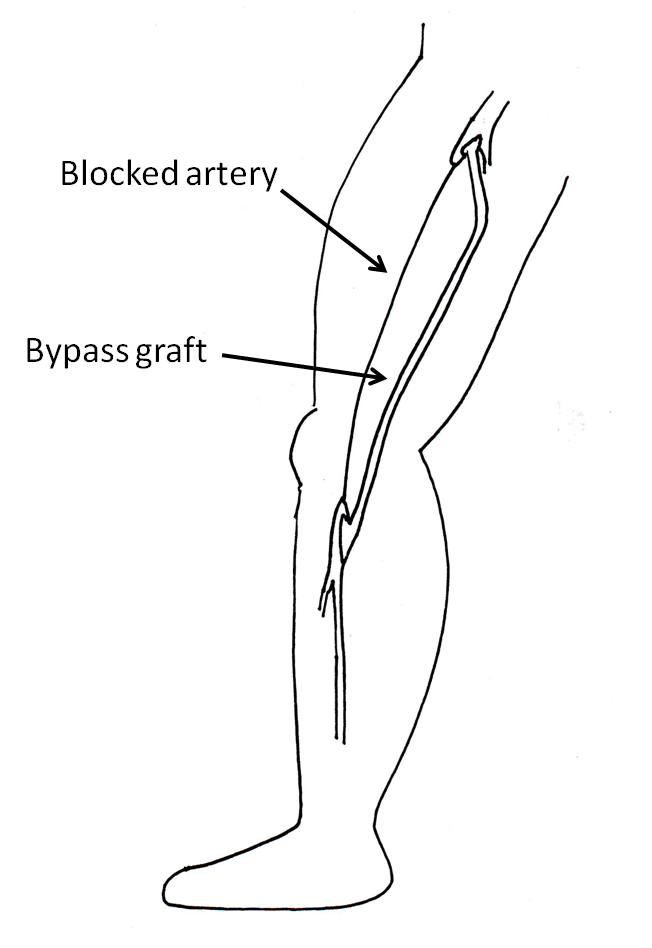Atherosclerosis can cause narrowing or blockage of arteries resulting is inadequate blood supply to almost any part of the body. Traditionally the only way to restore blood supply to a limb or organ deprived by this process has been by‘re-routing’ the blood using surgical bypass. Most commonly bypass procedures are performed for PAD in the lower limbs and nowadays, lower limb bypass procedures are only performed when angioplasty/stenting has been unsuccessful or has not been an option.
The conduit or ‘pipe’ used to re-route the blood around the blocked artery (Figure) in surgical bypass is wherever possible autogenous, i.e. from the patients own body and consists of vein removed from the leg (or in some cases the arm).When useable vein is not available then there is sometimes an option to use an artificial or prosthetic bypass graft.
Surgical Bypass Operations: Unlike angioplasty procedures, surgical bypass procedures are not minimally invasive, and usually require general (or spinal) anaesthetic, and a hospital stay of 5 days or more. Sometimes extensive surgical wounds are present with sutures or wound drains in place.
When successful, surgical bypass is effective and arguable the best way to restore blood flow to a compromised limb, the trade-off being the more invasive nature of the procedure and the greater risk of complications.
Main Risks associated with Surgical Bypass Operations.
- Failure: The bypass procedure does not work; the extent of the vascular disease is greater than anticipated. Failure may be early or late. This may result in requirement for further surgery or even limb loss.
- Haematoma: Bleeding into the wound, usually requiring a further emergency procedure to remove blood clot and ensure that there is no ongoing bleeding.
- Poor wound healing: This may result in a prolonged hospitalisation. If wound healing does not occur amputation may be required.
- Infection: The severity of this complication varies ranging from requiring a course of antibiotics to requiring further surgery and possibly removing and infected bypass.
- Nerve injury: Most nerve injury when it does occur causes temporary skin numbness around the wound. Very rarely nerve injury can result in permanent numbness or weakness in muscle groups which may affect the ability to walk.

